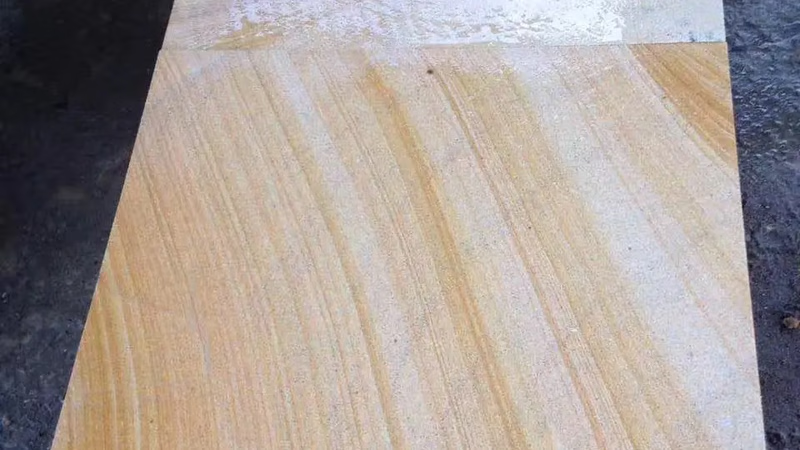
Stunning sandstone formations highlight West Asia"s geological beauty. "
Sandstone begins to form when loose sand grains accumulate in a depositional environment. This can occur in various settings, such as riverbeds, deltas, beaches, or deserts. In the Middle East, desert environments and ancient river systems have been significant contributors to sand accumulation. As compaction continues, the sand grains become more tightly packed and may undergo a process called lithification, transforming the loose sand into solid rock. Cementation plays a crucial role in this process, as minerals precipitate and fill the gaps between sand grains, binding them together. The cementing minerals can include silica (silica cement), calcium carbonate (calcite cement), iron oxide (hematite cement), or clay minerals (argillaceous cement). The specific composition of the cementing material influences the color and properties of the resulting sandstone.
The ancient city of Petra, famous for its impressive architecture carved into the sandstone cliffs, features extensive sandstone formations. The iconic structures, including the Treasury (Al-Khazneh), Monastery (Ad Deir), and numerous tombs and temples, showcase the beauty and versatility of sandstone in the region. Wadi Rum, a desert valley in southern Jordan, is known for its breathtaking sandstone landscapes. The area's towering sandstone cliffs and rock formations, with their reddish hues, have made it a popular destination for tourists and filmmakers alike.
In the central region of Turkey, Cappadocia is renowned for its unique rock formations, known as "fairy chimneys." These formations are composed of volcanic ash and sandstone eroded over millions of years, creating a surreal and captivating landscape. The Al Hajar Mountains, stretching across Oman and the United Arab Emirates, contain extensive sandstone formations. The rugged mountain range showcases towering cliffs, deep canyons, and dramatic rock formations, all primarily composed of sandstone.
Wadi Al-Mujib, a river canyon in Jordan, features sandstone cliffs and gorges. The area is known for its stunning natural beauty, with the sandstone walls rising dramatically above the river and creating a picturesque landscape. The Zagros Mountains, extending across Iran, Iraq, and southeastern Turkey, contain sandstone formations along with other sedimentary rocks. These mountains are an important geological feature in the region and have shaped the landscape and cultural history of the area.
The formation of rocks, which are sandstones, is such that they are permeable to water and their porosity is such that they can hold large amounts of water, which makes them precious watersheds. Fine-grained watersheds such as sandstones are more prone to filtering contaminants from the surface than rocks such as limestone and other rocks formed by seismic activity.
The formation of sandstone involves two principal stages. If the sand is deposited close to its source rock, it will resemble the source rock in composition. However, the more time and distance that separate the source rock from the sand deposit, the greater its composition will change during transport. Grains that are composed of easily weathered materials will be modified, and grains that are physically weak will be reduced in size or destroyed.
Over time, as additional layers of sediment accumulate above the sand, the weight of the overlying material increases. This leads to compaction of the sand layer beneath, reducing pore spaces between grains and causing the grains to pack tightly together. The increasing pressure from the overlying sediment promotes compaction, squeezing out any excess water. Over geologic time, the buried sand layers experience diagenesis, which involves physical and chemical changes due to pressure, temperature, and fluid movement. This process further enhances the compaction and cementation of the sand, solidifying it into sandstone. Geological processes like tectonic activity, erosion, and uplift may also play a role in exposing sandstone formations in mines.
-

Sandstone is a versatile building material known for its durability, aesthetic appeal, and strength, making it suitable for various applications. It is commonly used in facades, walls, flooring, landscaping projects, and outdoor spaces such as pathways and patios. Its thermal properties also make it ideal for fireplace surrounds. However, sandstone has limitations due to its high porosity and water absorption. It is unsuitable for areas exposed to moisture or acidic environments, such as bathrooms or industrial settings. Additionally, sandstone may not withstand heavy loads or extreme weather conditions like freeze-thaw cycles. While it can be used for countertops, it requires regular maintenance to prevent damage from scratching and staining. Overall, understanding the appropriate uses of sandstone is crucial for maximizing its benefits while avoiding potential issues.
-
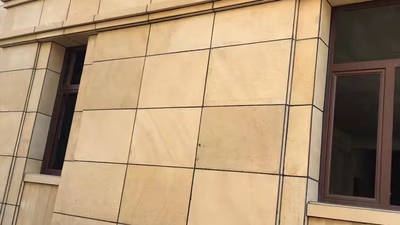
Sandstone is a versatile natural stone known for its aesthetic appeal and durability. Its unique patterns and warm tones make it suitable for various applications, including countertops, flooring, wall cladding, and outdoor spaces. The material"s excellent thermal insulation properties allow it to remain cool in warm climates, making it ideal for patios and pool areas. Sandstone is widely available across the globe, particularly in regions of Asia, which contributes to its affordability compared to other stone types. As a sustainable resource, sandstone is quarried with minimal processing, promoting environmentally friendly construction practices. Its resistance to weathering and heavy loads makes it suitable for high-traffic areas. Additionally, sandstone requires low maintenance; regular cleaning with mild soap suffices to maintain its appearance. Sealing can enhance its longevity and stain resistance.
The diverse color range of sandstone—from white to red—adds to its appeal in both construction and decorative applications. "
-
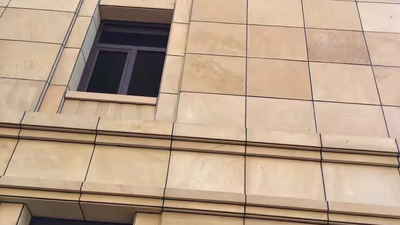
Sandstone forms in diverse environments such as deserts, riverbeds, and marine settings, influenced by sediment sources and weathering processes. Its mineral composition includes quartz, feldspar, and clay minerals, which determine its characteristics. Various types of sandstone exist: Quartz Sandstone is durable and light-colored; Arkose contains feldspar and has a reddish hue; Greywacke is dark and mixed with rock fragments; Cross-bedded sandstone features inclined layers from sand dune migration; Tuffaceous sandstone includes volcanic ash. Other types include Calcareous Sandstone, which crumbles in acidic conditions; Siliceous Sandstone, stable in acid; Iron Oxide Sandstone with brown to red colors; and Dolomite Sandstone, which is less resistant in urban areas. Weathering and erosion significantly affect sandstone"s composition over geological time scales. Environmental changes can lead to the formation of different sandstone types at various periods. Red sandstone is known for its reddish hue due to iron oxide, while white sandstone is light-colored and often used in construction. Brown sandstone has a warm appearance enriched with iron oxides.
Diagenesis involves physical and chemical changes during sediment transformation into rock, influenced by factors like temperature and pressure. Tectonic forces also contribute to the diversity of sandstone types by altering sedimentary environments. "
-
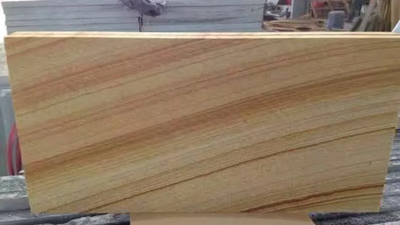
Sandstone is a sedimentary rock primarily made of sand-sized mineral particles, predominantly quartz. It forms through the compaction and cementation of sand grains over time. Sandstone is widely utilized in construction due to its durability and aesthetic appeal, serving as a building material for walls, floors, and facades. Its color varies significantly based on mineral content, ranging from white and beige to red and brown. Notable sandstone formations include the Grand Canyon and Petra"s temples. The rock"s texture can be fine- to coarse-grained, with distinct layers reflecting sediment deposition. The cementing material, which can include silica or calcium carbonate, influences the rock"s strength and appearance. Sandstone"s weather-resistant properties make it suitable for outdoor applications, while its ease of shaping allows for diverse architectural uses.
Additionally, its hardness makes it effective for sharpening tools. Overall, sandstone"s versatility in construction and historical significance as a material highlight its importance in various industries. "
-

Sandstone formation in West Asia is influenced by various depositional environments, particularly deserts and ancient river systems. The process begins with the accumulation of loose sand grains, which undergo compaction and lithification to become solid rock. Cementation, involving minerals like silica and calcium carbonate, plays a crucial role in binding the grains together. Notable sandstone formations can be found in locations such as Petra, Wadi Rum, and the Al Hajar Mountains. These areas showcase stunning geological features that attract tourists and filmmakers alike. Sandstone"s permeability makes it valuable for water retention and filtration, contributing to its significance as a watershed. The composition of sandstone varies based on its distance from the source rock, with geological processes like erosion and tectonic activity further shaping these formations over time. Understanding these dynamics is essential for businesses engaged in commodity trade and supply chain solutions within the region. "
-
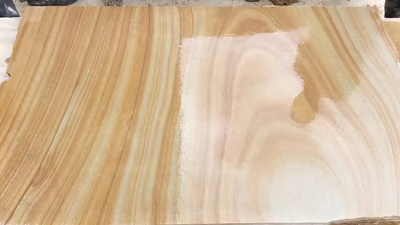
Sandstone is a sedimentary rock primarily composed of sand-sized grains, predominantly quartz, which provides its hardness and durability. The texture of sandstone varies from fine to coarse-grained, influenced by sorting and compaction. Its color spectrum ranges from tan to red, determined by mineral content and impurities like iron oxide. Sandstone is susceptible to both mechanical and chemical weathering, leading to unique landforms over time. Its workability makes it a favored material for construction and decorative applications, including walls, ceilings, and flooring. Sandstone"s thermal conductivity allows it to retain heat effectively, making it suitable for fireplaces and thermal storage systems. With a low water absorption rate of 1. 5 to 6%, sandstone is often used in outdoor settings such as patios and pool areas.
It can be categorized into four types based on its composition: clay sandstone, calcareous sandstone, siliceous sandstone, and quartzite. Notable structures made from sandstone include the White House and the Taj Mahal. The rock"s porosity varies significantly; high-porosity sandstones can be permeable, facilitating fluid movement essential for groundwater flow and oil reservoirs. Overall, the strength and durability of sandstone depend on its grain size, cementation level, and mineral makeup.






